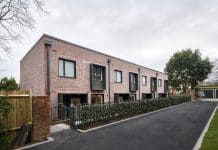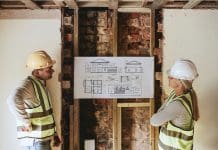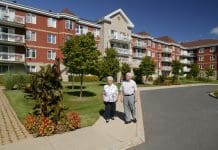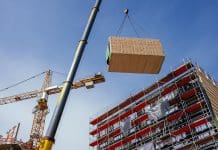There has been considerable focus on the importance of accessible housing in the last few weeks – and with good reason, says Christina McGill of Habinteg
As there are 300,000 disabled adults who have an unmet accessible housing need in the UK right now, increasing the supply of accessible and adaptable homes is essential. Habinteg’s #ForAccessibleHomes campaign, which culminated in a day of action on Friday 8 September, helped raise awareness of the positive impact of accessible housing. There is a broad and growing coalition of support for the issue.
Just 7% of homes in England offer even minimum accessibility features, which is simply not sufficient to meet the requirements of our current population, let alone the increasingly pressing needs of our ageing society. In response to this accessible housing deficit, a group of influential charities and representative bodies – led by Habinteg – have joined together to make the case for accessible homes.
The campaign saw cross-party parliamentary support for accessible homes, with minister for disabled people Penny Mordaunt MP and Labour’s shadow housing minister Melanie Onn MP attending our drop-in session in Parliament. The event was also attended by influential backbenchers from both major parties and from every corner of the UK – including shadow ministers from the Scottish National Party.
Accessibility is more than just a niche issue, as inaccessibility affects everyone. Even if we are not personally affected right now, most of us know someone with an access requirement, or may develop an access requirement in later life. Everyone benefits from inclusive and accessible design. It’s common sense, therefore, to plan for the long-term housing needs of our population, rather than settling for short-term, inaccessible housing.
Accessible housing policy update
Earlier this year, Habinteg released an accessible housing policy update, which outlined recent developments regarding the supply of accessible homes.
Accessible and adaptable housing ensures that homes are suitable for a range of people – from older and disabled people to families with young children. However, most people still think of accessible homes as clinical and ‘specialist’, rather than bright, spacious and practical, which is the reality. Challenging this outdated perception of accessible and adaptable housing is crucial to influencing decision makers and generating wider support.
Following the progress outlined within the government’s Housing White Paper in February this year, it’s important that this positive focus on accessible and adaptable housing is reasserted in the post-election period.
The Women & Equalities Select Committee inquiry into disability and the built environment also made important recommendations to government regarding accessible homes, including amending the minimum baseline standard for all new homes under Part M of the Building Regulations to Part M (4) Category 2. The inquiry also recommended that a cross-departmental strategy be established to join up all aspects of built environment policy that affect accessibility. Housing minister Alok Sharma MP is expected to respond to these recommendations next month.
The Neighbourhood Planning Act
The Neighbourhood Planning Act 2017, which passed into law earlier this year, now requires the secretary of state to provide guidance to local authorities on meeting the housing needs of older and disabled people.
Government has acknowledged planning for accessible homes is an issue that requires it to support local authorities. It’s vital that the resulting guidance is strong enough to make the change to local planning and support the development that is clearly needed. Habinteg and other organisations concerned will be offering support to DCLG to ensure the statutory guidance is fit for purpose and effective in meeting a diverse range of housing need in each local authority area.
There is a gradual shift in the policy landscape that is beginning to reflect the benefits of accessible housing, but this needs to remain a key focus when building and designing new homes. As a responsible housing sector, we must commit to delivering homes and communities that meet an inclusive range of needs. Whether for families with young children, somebody returning home after a hospital stay, a young disabled person looking to move for employment or an older person with increasing mobility impairment, providing accessibility and flexibility in all new homes should be one of the key tests against which our social value will be measured.
Importance of accessible homes
We know from our tenants that the value of accessible housing cannot be overlooked. One of our tenants recently disclosed the difference that his wheelchair accessible property has made to him and his family, saying: “The place we lived before had a very small bathroom and lots of steps, so my wife couldn’t move around easily. We suffered to be honest, but not anymore. This place is really big and accessible, which is important for my wife because she can move around in her wheelchair, especially the bathroom and the garden.”
This is why campaigns like #ForAccessibleHomes are so important. As our Vice-Chair Andrew Gibson sums it up: “A home that meets your needs is fundamental to independent living and the ability to take up opportunities in life and adapt to changing circumstances. That’s why the campaign matters. An accessible housing deficit means this is not reality for everyone and we’ll keep making the case to change the situation for the better.”
With a raft of policy consultations coming out, including DCLG proposals on reform of ‘objectively assessed housing need’ and the Mayor’s London Housing Strategy, access and inclusion will play a key role – and with good reason.
Christina McGill
Head of Communications
Habinteg
Tel: +44 (0)20 7822 8700
Twitter: @Habinteg














